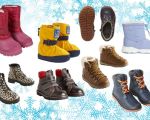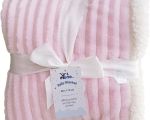1. Why Warm Insulated Gloves Are Essential for Skiing
Skiing exposes your hands to freezing temperatures, wind chill, and moisture, all of which can quickly lead to discomfort or even frostbite without proper protection. Warm insulated gloves for skiing are crucial to maintaining dexterity and comfort on the slopes. They protect your hands from the harsh winter elements, ensuring that you can grip poles securely and keep your fingers nimble.
Cold hands not only impair your skiing performance but also diminish the enjoyment of your outdoor experience. Insulated gloves provide a barrier against cold air and snow, helping to preserve your body heat. Without them, your hands can become numb and stiff, which could increase the risk of accidents or injuries during skiing activities.
1.1 The Impact of Proper Glove Choice on Skiing Safety and Performance
Wearing the right gloves improves your overall skiing safety by allowing you to maintain control and react swiftly to changing terrain. Warm gloves reduce the risk of cold-related injuries, and properly fitted gloves prevent snagging or loss of grip. In essence, they are an indispensable part of your skiing gear.
2. Key Features to Look For in Ski Gloves
When selecting warm insulated gloves for skiing, certain features stand out as essential for optimal protection and comfort. Look for gloves that offer:
2.1 Insulation Quality
High-quality insulation such as Thinsulate or PrimaLoft traps heat efficiently without bulkiness, keeping your hands warm while allowing flexibility.
2.2 Waterproof and Breathable Materials
Outer layers made of waterproof fabrics combined with breathable membranes prevent moisture from entering while allowing sweat to escape, keeping your hands dry and warm.
2.3 Wrist Closures and Gauntlets
Adjustable wrist straps or gauntlets help seal out snow and cold air, ensuring a snug fit and preventing heat loss.
2.4 Grip and Dexterity
Look for textured palms and pre-curved fingers that provide grip and freedom of movement, essential for holding ski poles and adjusting equipment.
3. Materials That Enhance Insulation and Waterproofing
The choice of materials directly influences glove warmth and durability. Commonly used insulating materials include synthetic fibers like Thinsulate, prized for their lightweight warmth and water resistance. Natural down insulation is warmer but less effective when wet.
Outer shells made of Gore-Tex or similar waterproof membranes protect from wind and moisture while allowing perspiration to escape. Many gloves also feature reinforced leather palms or synthetic overlays for extra durability and grip.
Understanding these materials helps you select gloves that perform well in varied weather conditions and stand up to rigorous use.
4. How to Choose Gloves Based on Your Skiing Style
Your skiing style plays a big role in determining the ideal gloves. For alpine skiers focusing on speed and precision, lightweight yet highly insulated gloves that offer excellent dexterity are preferred. Freestyle skiers who need extra protection from falls may opt for gloves with reinforced padding and durable outer layers.
For backcountry or ski touring enthusiasts, gloves with superior waterproofing and breathability are crucial to handle changing weather and long hours outdoors. Layering options, such as liner gloves paired with insulated shells, provide adaptability for variable conditions.
5. Real-Life Story: A Skier’s Experience with Glove Selection
Emma, an avid skier from Colorado, shared her experience choosing warm insulated gloves for skiing after suffering from cold hands during a winter trip. She initially purchased thick gloves that were warm but bulky, limiting her ability to grip poles and adjust gear. After researching and trying thinner gloves with advanced insulation and waterproofing, she found a pair that kept her hands warm without sacrificing mobility.
Emma’s story highlights the importance of balancing insulation with dexterity and the benefits of investing in quality gloves. Her improved hand comfort enhanced both her performance and enjoyment on the slopes.
6. Tips for Maintaining Your Warm Insulated Gloves
To extend the lifespan and effectiveness of your warm insulated gloves for skiing, proper care is essential. Always follow manufacturer instructions for cleaning, typically involving gentle washing and air drying to preserve insulation. Avoid exposure to excessive heat which can damage materials.
Store gloves in a dry place and periodically check for wear or damage, especially in seams and waterproof membranes. Reapplying waterproof treatments can restore water resistance. Proper maintenance ensures your gloves remain reliable companions for many ski seasons.
For a curated selection of the best warm insulated gloves for skiing and expert advice, visit Fashion Hub to find top-quality products and personalized recommendations tailored to your needs.









